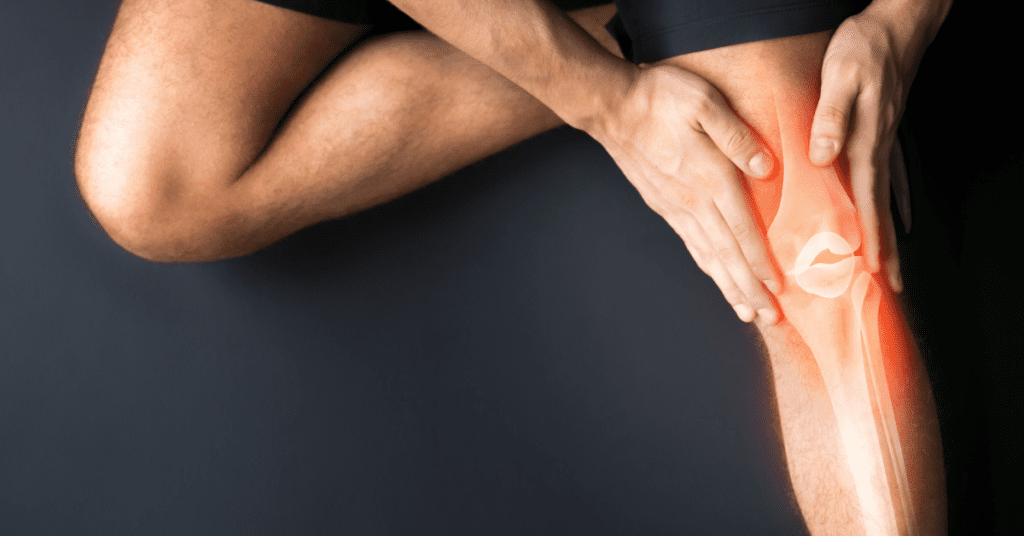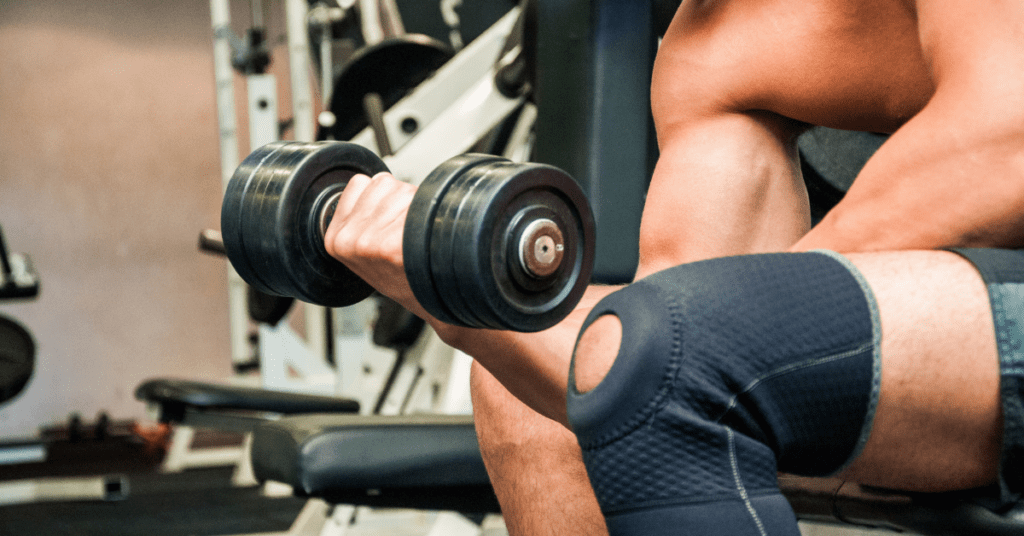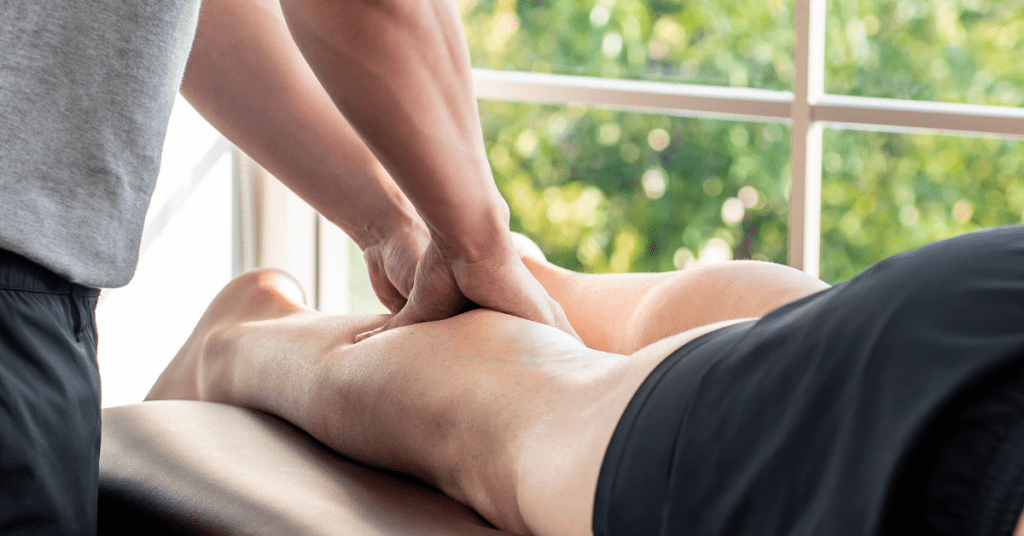Injuries are an unfortunate part of many people’s training journeys. They often come from nowhere, stop the training process, and take us out of the gym for weeks or months.
While challenging to overcome injuries, returning to the gym after a long break can be even more difficult.
To that end, we’ve put together this guide. In it, we’ve outlined the process of returning to the gym after an injury.
When to Consider Going Back to The Gym After An Injury
There are two primary schools of thought on the subject:
Some people recommend resuming physical activity only after you’re sure that the injury has healed. Until that point, you should avoid any kind of demanding physical activity. The other idea is that movement means health and we should return to the gym and do some training as soon as possible.
Both ideas have their value, and each could be the solution under specific circumstances.
In most cases, the ideal time to return to the gym would be as soon as possible. Once the initial swelling and discomfort go down, find a way to resume training in some form while keeping two things in mind:
- Avoid stressing the injured area. For example, if you’re dealing with a shoulder injury, avoid movements that involve your shoulders.
- Have lighter and less challenging workouts.
Doing so is beneficial for two reasons. First, it allows you to keep the momentum going. Instead of taking a break from the gym, feeling guilty, and then having to start over, you never break the chain of consistency.
Second, movement allows for active recovery to occur. Instead of sitting at home, you continue to move your body, which promotes blood flow that can speed up the recovery process. If nothing else, you still get to reap some health benefits of being physically active.
In some severe cases, you might not be able to get back to the gym immediately. For example, a broken leg will keep people out of the gym no matter how much they want to stay active. It’s essential to remain patient and look at the situation objectively. We also recommend you seek advice from your GP before starting any exercise program.

How to Approach Your Training After An Injury
If you enjoy working out and fitness is a big part of your life, you might be eager to jump into your old way of training right from the start. That’s a big mistake. Rushing the process can do more harm than good, so take your time and ramp up the intensity gradually.
Any break from the gym or period of less intense training will lead to loss of strength, muscle, and other physical attributes. So, it’s important to note that you won’t perform as well as you could before your injury. Take your time, have patience, and re-build your former self one workout at a time.
The great thing about the human body is that muscle memory exists. It’s easier to regain a specific athletic level or muscular development than to first achieve it. For example, building twenty pounds of muscle for the first time is quite challenging. But if you lose them for some reason (for example, having to take an extended break due to an injury), it’s easier to gain muscle once again.
For one, our muscles accumulate myonuclei, which promote growth. If we stop training our muscles, they atrophy, but the myonuclei cells inside stay around. Researchers aren’t sure how long myonuclei stick around, but some speculate that we gain them for life. So, the higher number of myonuclei makes it easy to build our muscles back to their previous size.
It’s also easier to establish habits of regular training and good nutrition if you’ve had them previously. Even if you take a temporary break from tracking calories, eating plenty of protein, and going to the gym, it’s easier to fall back into that routine once you feel ready.
And finally, it’s easier to start training because you won’t lose the skill of lifting weights during the layoff. You won’t have to re-learn every movement pattern from the ground. Instead, you can do a quick refresher course and start building up your strength and muscle mass again.
So, keep these things in mind and remember that you don’t have to rush the process or feel like you have to catch up.

How to Overcome the Psychological Limitations
Aside from taking care of our physical selves, we also have to overcome psychological limitations that come from injuries. Some people deal with mental roadblocks better than others, but each case comes with its fair share of doubts and anxiety.
In general, folks go through the five stages of grief when they first get injured and begin the healing process. These are:
- Denial
- Anger
- Bargaining
- Depression
- Acceptance
Some people feel more of one and less of the others, and athletes can sometimes jump from one to the next, then move back. For example, an injured athlete might start with denial but quickly reach acceptance before lapsing back to anger or bargaining.
Having some support for fellow athletes, friends, and family can help you accept the situation for what it is and avoid dwelling in the other stages for too long. In any case, time will be the defining factor. There is no solution here, but one of the best things you can do is avoid beating yourself up too badly. Sure, you might have gotten injured. And sure, you might have made a huge mistake that led to the injury. But dwelling on it for too long won’t do you any good.
What matters more is that you learn from that painful experience and take your time with the recovery. Doing so can help you get back into training with more knowledge on staying safe and avoiding injuries in the future.

Conclusion
Returning to the gym after an injury is often easier said than done. Aside from the physical limitations and anxiety, you also have to deal with the mental roadblocks that often come as a result.
Time will always play a massive role in your recovery, and you shouldn’t try to rush the process. Plus, it never hurts to seek help or support from others if you’re unsure how to handle the situation yourself.
If you’re interested in expanding your knowledge in the area and assisting people on their road to recovery, why not consider a career as a sports massage therapist? Students learn to help people and guide them while healing from injuries during a sports massage course with UKST.

